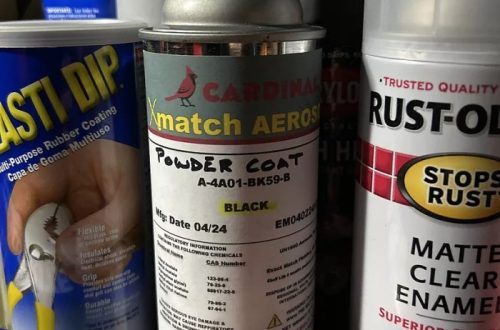Part 1: History and Evolution of Ink Pens
Ancient Beginnings: The Birth of the Ink Pen
The ink pen, a seemingly simple tool, has a rich and storied history dating back to ancient civilizations. One of the earliest known uses of the ink pen can be traced to the Egyptians. They employed reed pens to write on papyrus. These early pens were rudimentary tools, crafted from natural materials. Yet they laid the foundation for the development of more sophisticated writing instruments.
The Mesopotamians, another ancient civilization, also utilized reed pens to inscribe their thoughts on clay tablets. These early scribes developed techniques for sharpening and shaping the reed pens to create different line widths and styles, demonstrating an early understanding of penmanship.
Medieval Innovation: The Rise of the Quill Pen
The Middle Ages witnessed a significant advancement in pen technology with the introduction of the quill pen. Made from the feathers of birds, such as geese and swans, quill pens offered greater flexibility and durability compared to their reed predecessors.
Quill pens became the primary writing instrument for scholars, scribes, and artists during this period. The ability to create varying line widths and textures with a quill pen allowed for more expressive and ornate writing styles. The quill pen’s popularity endured for centuries, leaving its mark on the written word throughout the medieval era.

Part 2: Types of Ink Pens
Fountain Pens: A Classic Writing Instrument
The fountain pen, a sophisticated writing instrument, emerged in the 19th century as a refinement of earlier pen designs. Unlike quill pens, which required dipping in ink frequently, fountain pens feature a reservoir of liquid ink, ensuring a smooth and continuous flow of ink onto the paper.
Fountain pens are renowned for their precision and elegance. They are popular among writers, calligraphers, and those who appreciate the tactile experience of writing with a traditional instrument. The act of writing with a fountain pen is often seen as a form of self-expression. It allows for a more personal and intimate connection with the written word.
Ballpoint Pens: A Modern Convenience
The ballpoint pen, a more recent invention, gained widespread popularity in the 20th century. Unlike fountain pens, which require the use of liquid ink, ballpoint pens utilize a small rotating ball to dispense ink onto the paper. This mechanism ensures a consistent flow of ink, making ballpoint pens a convenient and reliable choice for everyday writing tasks.
Ballpoint pens are known for their durability, portability, and ease of use. They are widely available in various colors and styles, making them suitable for a range of writing applications. While fountain pens may be preferred by those who appreciate a more traditional writing experience, ballpoint pens offer a practical and efficient solution for everyday writing needs.
Part 3: Techniques for Writing with an Ink Pen
Mastering Pressure and Angle: The Art of Ink Pen Writing

Writing with an ink pen requires a delicate balance of pressure and angle to achieve the desired line thickness and style. By understanding and controlling these factors, writers can create a wide range of effects, from subtle shading to bold, expressive strokes.
Applying light pressure to the pen will result in thin, delicate lines, ideal for creating fine details and intricate patterns. Conversely, applying heavy pressure will produce thick, bold lines, suitable for emphasizing key points or creating a sense of drama. By varying the pressure throughout the stroke, writers can achieve a variety of textures and effects, adding depth and dimension to their writing.
The angle at which the pen is held also plays a significant role in determining the line thickness and style. Tilting the pen at a shallow angle will produce a thin line, while tilting it at a steeper angle will create a thicker line. Experimenting with different angles can help writers achieve a variety of effects and find the style that best suits their writing goals.
Smooth Movement: The Key to Fluid Writing
Proper hand and arm movement is essential for fluid and controlled writing with an ink pen. Practicing smooth, continuous strokes can help writers develop the control and precision needed to produce consistent and legible handwriting.
One effective technique for improving hand and arm movement is to focus on the flow of the ink. By paying attention to the way the ink flows onto the paper, writers can develop a sense of rhythm and control. It is also helpful to practice writing slowly and deliberately at first, gradually increasing speed as control improves.
Part 4: Ink Pen Art and Calligraphy
Ink Pen Illustrations: A Precision Art Form
Ink pens have long been a favorite tool among artists for creating intricate and detailed illustrations. The precision and control offered by ink pens allow artists to capture fine details and textures with remarkable accuracy. The ability to vary the line width and intensity of the ink stroke provides artists with a wide range of expressive possibilities.
Whether it’s drawing delicate botanical illustrations or creating dynamic comic book characters, ink pens offer artists the versatility needed to bring their visions to life. The stark contrast between the black ink and the white paper creates a sense of drama and depth. This enhances the visual impact of the artwork.

Calligraphy: The Art of Beautiful Writing
Ink pens are also indispensable tools for calligraphers, who specialize in the art of beautiful writing. Calligraphy involves the use of different types of ink pens, as well as specialized techniques, to create intricate and expressive letterforms.
Calligraphers carefully select ink pens that are suitable for their desired style and technique. Some prefer broad nibbed pens for creating bold and dramatic strokes, while others opt for fine nibbed pens for more delicate and intricate work. The choice of ink is also crucial, as different types of ink can produce varying textures and effects.
Part 5: Caring for Ink Pens
Cleaning and Maintenance: Caring for Your Ink Pen
Proper cleaning and maintenance are essential for ensuring optimal performance and longevity of your ink pen. Regular cleaning helps to remove any ink buildup or residue that may interfere with the flow of ink and prevent clogging.
To clean a fountain pen, disassemble the pen and gently flush the nib and feed with warm water. Use a soft-bristled brush to remove any stubborn ink residue. After cleaning, reassemble the pen and fill it with fresh ink. For ballpoint pens, simply remove the refill and wipe the tip with a soft cloth to remove any dried ink.
Storage: Protecting Your Ink Pen
Proper storage is another important factor in preserving the life of your ink pen. Storing your pen in a horizontal position helps to ensure even ink flow and prevent leakage. Additionally, keeping your pen in a protective case can help to shield it from damage or breakage.
If you are not using your fountain pen regularly, it is recommended to flush it with water and store it in a pen case with a dry nib. This will help to prevent the ink from drying out and clogging the pen. For ballpoint pens, simply store them in a pen case or a pocket to protect them from damage.

Part 6: Ink Pen Collecting and Appreciation
Collecting Vintage and Limited Edition Ink Pens
The allure of vintage and limited edition ink pens lies in their blend of craftsmanship, history, and design. These pens often embody a bygone era, capturing the essence of a particular time period. For many enthusiasts and collectors, these vintage and limited edition pens offer more than just a writing instrument; they represent a connection to the past and a tangible piece of history.
Vintage ink pens, dating back decades or even centuries, are prized for their craftsmanship and often possess a unique patina that reflects their age. Limited edition pens, released in small quantities, are highly sought after by collectors due to their scarcity and exclusivity. These pens may feature special designs, materials, or engravings, making them highly desirable among enthusiasts.
Artisanal Craftsmanship: The Beauty of Handcrafted Pens

Skilled artisans craft artisanal ink pens, and people admire them for their quality materials, meticulous attention to detail, and unique designs. Many consider these pens works of art, reflecting their makers’ craftsmanship and creativity. Typically, artisans make artisanal ink pens from high-quality materials like precious metals, exotic woods, and natural stones. They carefully select and combine these materials to create pens that are both functional and aesthetically pleasing. The intricate details, such as intricate engravings, intricate patterns, or hand-painted designs, add to the overall beauty and value of these pens.
Beyond their appearance, artisanal ink pens are also prized for their functionality. The nibs are often hand-ground and adjusted to ensure a smooth and consistent writing experience. The overall balance and weight of the pen are carefully considered to provide a comfortable and enjoyable writing experience.
In conclusion, the ink pen has a rich history and remains a versatile tool for writing, art, and self-expression. Whether used for everyday writing or artistic endeavors, the ink pen continues to captivate people with its timeless appeal and craftsmanship.




